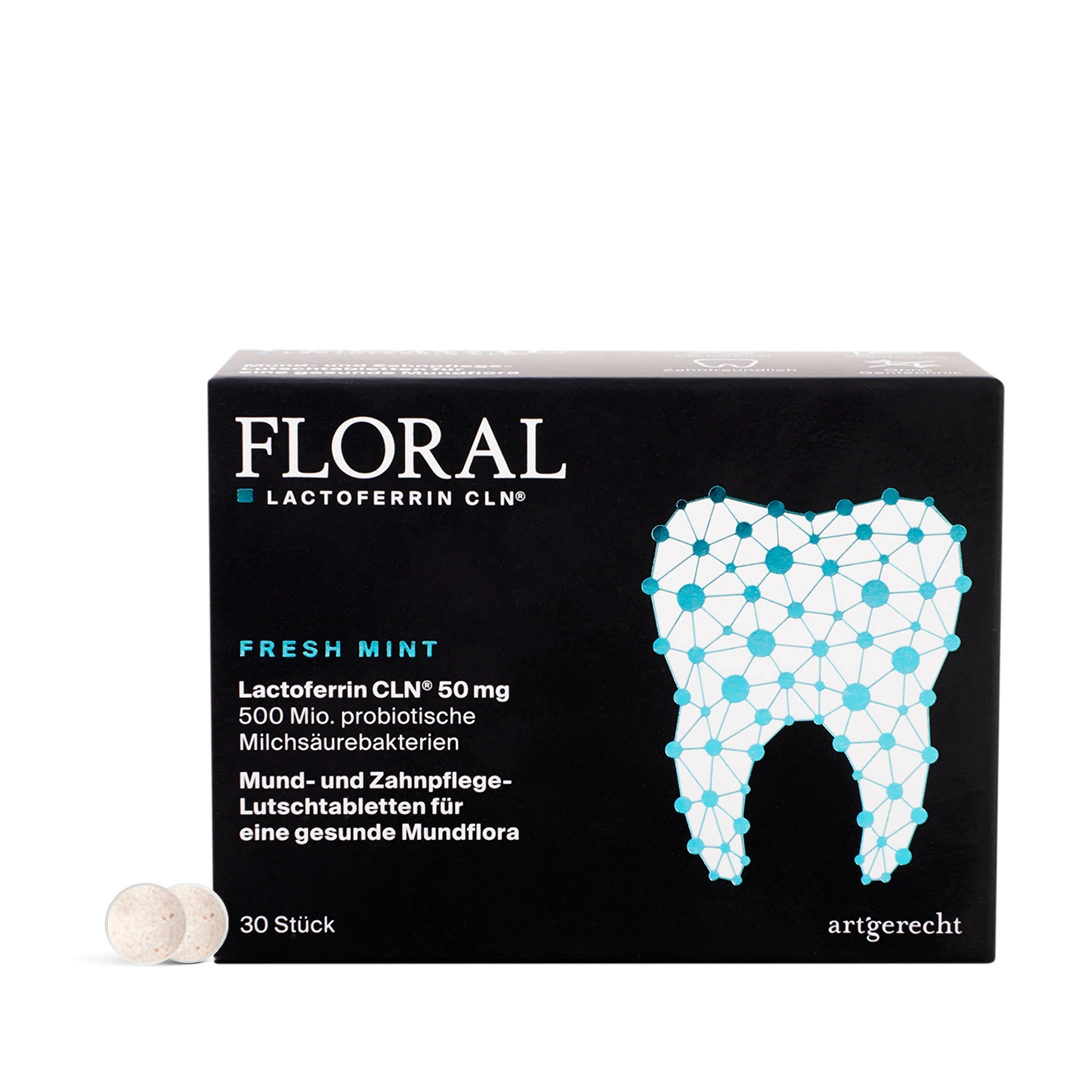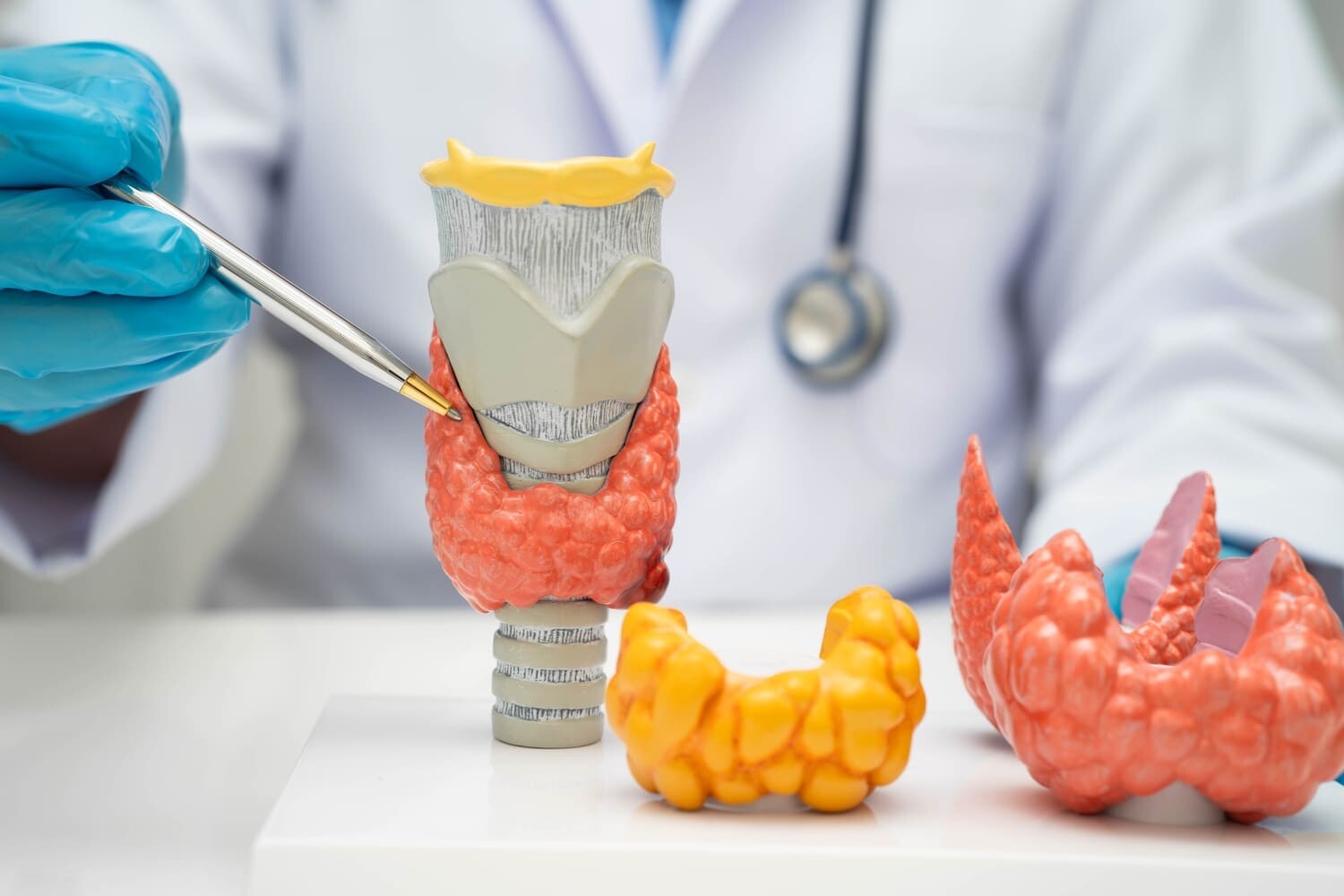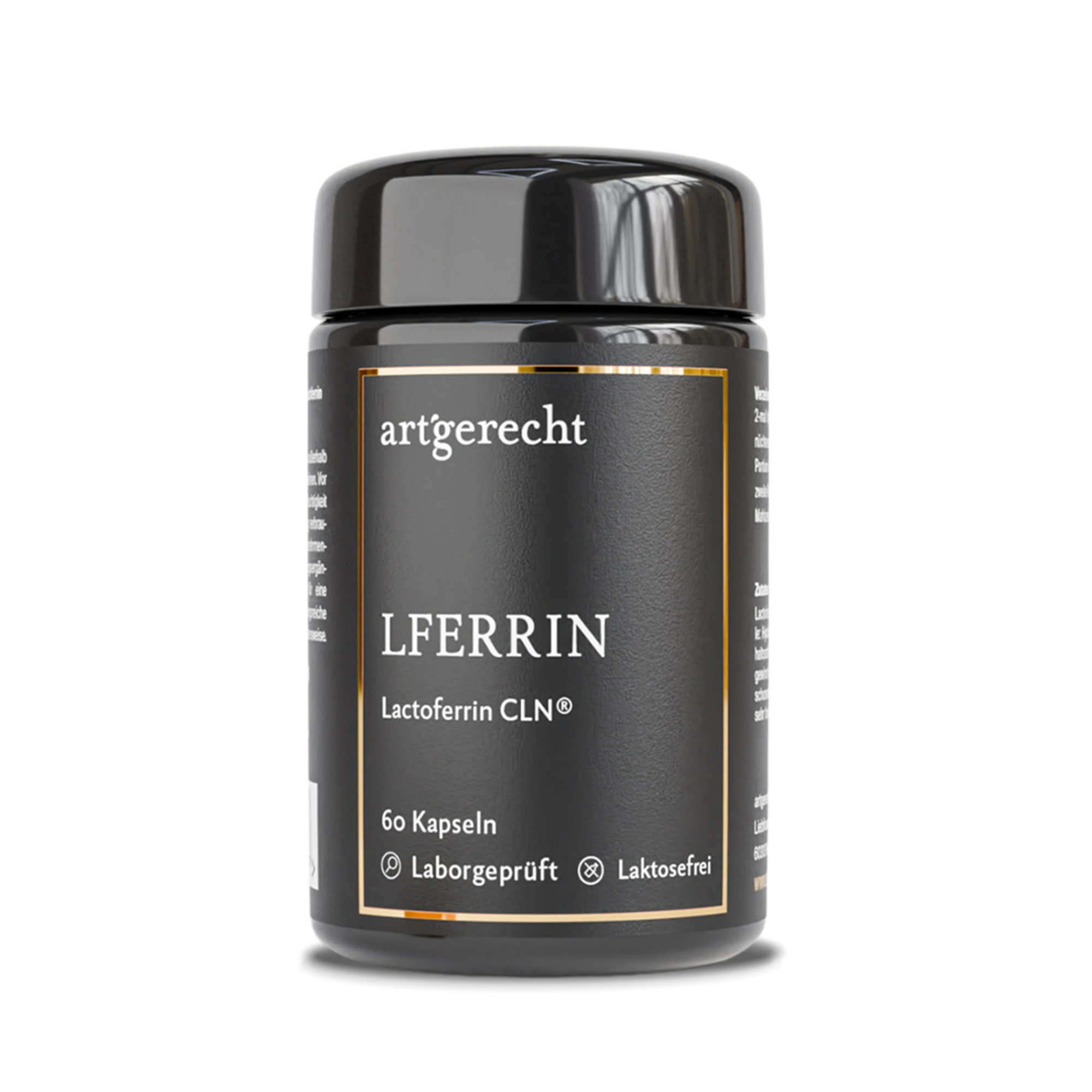- Healthy starts in the mouth!
- The-most-common-oral-health-problems-and-their-causes
- The connection between oral and general health
- The role of saliva in the oral cavity – An underestimated protective factor for our health
- The-right-oral-hygiene
- Our-mouth-mucosa – What-to-be-considered?
- How FLORAL from species-appropriate supports our oral microbiome
- Sources
Healthy starts in the mouth!
The motto of World Oral Health Day 2025 is ""Healthy teeth for a healthy life"" and highlights how everyone can improve their oral health through targeted measures. Every year on March 20, he reminds us how important good oral hygiene is for our health and well-being. But oral health means much more than just clean teeth - it affects our immune system, our digestion and even the risk of chronic diseases such as diabetes and cardiovascular problems.
Current scientific findings show that oral flora plays a central role in overall health. An imbalance can not only lead to tooth decay and gum disease, but can also promote inflammatory processes in the body. At the same time, there are innovative approaches to prevention - from probiotic dentistry to new diagnostic techniques that enable personalized dental care.
The-most-common-oral-health-problems-and-their-causes
Caries:
Every one of us has probably been to the dentist and hoped that no drilling would be necessary. But why does drilling actually have to be done? In many cases, the reason is tooth decay. Caries is one of the most common infectious diseases worldwide. The natural microbial homeostasis is disturbed by acid-forming metabolic processes of various bacteria. Carbohydrates are metabolized by the bacteria into their end products, which reduce the pH value of the dental plaque in the form of organic acids. This is also known as cariogenic acid attack. If the pH value drops low enough, this leads to demineralization of the dental hard tissues, the outer enamel and the inner dentin. In summary, it can be said that caries results from an interaction between the tooth, bacteria and their substrate, sugar. Bacteria such as S. mutans accumulate particularly frequently in the interdental spaces and in the fissures, i.e. the deep grooves on our teeth, as these are the places where food residues are most likely to remain. It is particularly important to ensure that children have good oral and dental hygiene, as milk teeth in particular are more susceptible to tooth decay due to their lower mineralization. Even when the first and second molars, i.e. molars, erupt, the prevalence of tooth decay is higher than in the full adult tooth generation.
Fig. 1: illustrates the prevalence of tooth decay in childhood
The dentist can, however, gently remove the affected substance by drilling; this process is called „excavation“. The resulting hole is then filled with a filling. If the caries is not detected in time, this means a steady demineralization of the tooth structure until the infection finally reaches our pulp. The pulp is located in the pulp chamber and consists of the dental nerve and vessels, as well as collagen and loose connective tissue. Once the pulp is bacterially infected, known as „pulpitis“, root canal treatment must be carried out in most cases, in which the entire diseased tissue is removed down to the roots of the tooth. [1]
Gingivitis:
Gingivitis is an inflammation of the gums, which is also referred to in technical terms as „gingiva“. The gums can become red, swollen or even bleed. The main cause of gingivitis is the development of dental plaque, which is also called „plaque“. Many different bacteria arrange themselves in a three-dimensional structure on the surface of our teeth, especially in hard-to-reach areas of the teeth. There is a small gap between the tooth and gum, also known as the „physiological sulcus“. This is where the bacteria eventually come into contact with our gums and lead to inflammation. The reasons for gingivitis are similar to those for tooth decay; the main cause is poor oral hygiene, which is also the reason for the formation of plaque. In addition, a high-sugar diet and smoking also contribute to the infection. However, gingivitis can also be caused by medication, as certain drugs such as antidepressants and antihypertensives affect our saliva production and therefore promote the formation of plaque. Diabetes can also increase the risk of gingivitis. As the disease is treatable, i.e. reversible, improving oral hygiene, for example by brushing teeth regularly with a fluoride toothpaste (twice a day for at least 2 minutes each time) and using dental floss in the intervals between brushing, can help prevent and also reduce the risk of infection. Rinsing with a solution containing chlorhexidine also contributes to faster healing. [2]
Parodontitis:
Periodontitis is a disease of the entire periodontium. It usually results from gingivitis caused by plaque, which, if left untreated, continues apically via the plaque on the surface of the tooth root, i.e. all the way to the tip of the tooth root. The plaque is also referred to here as „calculus“. Our periodontium anchors the tooth firmly in the alveolus, a cavity in our bone. It is made up of the alveolar bone, the cement of the tooth root, the periodontium and the gums. If these structures are affected by bacteria, the tooth gradually loses its attachment, as the bone and gums in particular break down as the disease progresses.
The connection between oral and general health
Oral health is much more than just a good dental status – it plays a decisive role in the overall health of the body. More and more scientific studies show that diseases of the oral cavity are linked to systemic diseases such as cardiovascular disease, diabetes and even neurodegenerative diseases. The oral cavity is home to a variety of microorganisms - the oral microbiota. A healthy mouth harbors a balanced bacterial community that helps defend against pathogens. However, a dysbiosis, i.e. an imbalance of these bacteria, can lead to oral diseases such as tooth decay and periodontal disease and subsequently trigger systemic inflammatory processes.
Periodontitis is a chronic inflammatory disease of the periodontium caused by certain pathogenic bacteria. If left untreated, it can not only lead to tooth loss, but can also release inflammatory mediators via the bloodstream. This can increase the risk of various systemic diseases. Studies show that periodontitis-associated inflammatory processes can contribute to the development of atherosclerosis by allowing bacteria or their toxins to enter the bloodstream and cause inflammatory reactions. The reciprocal relationship between diabetes and periodontal disease is well documented. Untreated periodontal disease can worsen blood sugar levels and increase the risk of diabetes, while poorly controlled diabetes weakens the immune defense in the mouth. Recent research indicates that periodontitis bacteria (e.g. Porphyromonas gingivalis) have been detected in brain tissue and may contribute to the development of Alzheimer's disease.
Oral health also plays a crucial role during pregnancy. Periodontal inflammation is associated with an increased risk of premature birth and low birth weight. Scientists suspect that inflammatory messenger substances enter the bloodstream and can therefore influence the premature birth rate. Consistent oral hygiene and regular visits to the dentist make a decisive contribution to maintaining not only oral health but also general health. Important measures include daily dental care, which includes brushing your teeth at least twice a day with fluoride toothpaste and the use of dental floss or interdental brushes. A healthy diet with little sugar and lots of vitamins supports the oral flora and the immune system. Regular professional dental cleanings and dental check-ups can detect and treat problems at an early stage, while not smoking can prevent periodontitis and reduce the risk of numerous systemic diseases.
Oral health is an integral part of general health. Scientific findings show that good oral hygiene has far-reaching positive effects on the entire organism. On the occasion of World Oral Health Day, awareness of this important connection should be raised further. A healthy mouth is not only the key to a radiant smile, but also to a healthy body. [3,4,5]
The role of saliva in the oral cavity – An underestimated protective factor for our health
Saliva is much more than just a liquid for moisturizing the mouth – it plays an essential role in our oral and general health. In addition to aiding digestion, it protects against infections and plays a major role in the prevention of tooth decay and periodontal disease. One of its most important tasks is to protect against harmful microorganisms through antimicrobial proteins such as lysozyme, lactoferrin and immunoglobulin A, which inhibit the growth of bacteria and fungi. An increased flow of saliva, for example due to medication or diseases such as Sjogren's syndrome, can increase the risk of infections such as oral thrush, periodontitis or gum disease.
Another crucial function of saliva is caries prevention. It neutralizes acids caused by bacterial fermentation of sugar, thereby protecting tooth enamel. In addition, it supports the remineralization of small enamel defects with calcium, phosphate and fluoride and helps to prevent tooth decay. Saliva is also essential for periodontal health, as it flushes away bacteria and inhibits their growth. An important factor here is the oral clearance rate. This illustrates the dilution and elimination, i.e. flushing, of substances in the oral cavity, a process whose speed varies greatly between individual patients. Conversely, a low clearance rate means a greater drop in the pH value of the saliva or plaque, which is much more harmful for the teeth in terms of caries development. The clearance rate is determined by the saliva flow rate and the amount of saliva in the mouth before and after swallowing. If this protection is lacking, the risk of gingivitis increases, which can develop into periodontitis if left untreated. Chronic periodontitis, in turn, is associated with systemic diseases such as diabetes and cardiovascular problems.
Fig. 2: Simplified representation of the clearance rates of 2 people after sugar intake; the pH value illustrates the caries prevalence
In addition, studies show that oral health is closely linked to general health. An imbalance in oral flora can not only cause local problems, but also have systemic effects. For example, people with insufficient saliva production have a higher risk of periodontitis, which in turn can affect blood sugar levels. Chronic inflammation in the oral cavity also increases the risk of arteriosclerosis, while a link between oral bacteria and neurodegenerative diseases such as Alzheimer's is being investigated.
A lack of saliva can also have a significant impact on quality of life. Those affected often suffer from difficulty swallowing, changes in taste and an increased risk of tooth decay and infections. Dry mouth can be caused by illnesses as well as medication such as antidepressants or beta blockers. To promote healthy salivation, it is advisable to consume sufficient fluids, chew sugar-free gum and eat a healthy diet. [6]
The-right-oral-hygiene
Good oral hygiene is essential for healthy teeth, resilient gums and long-term general health. Dental diseases such as tooth decay and periodontal disease are caused by bacterial processes in the oral cavity, which can be controlled by targeted measures. Plaque, a biofilm consisting of bacteria, saliva components and food residues, forms continuously on the teeth. If this is not removed regularly, it can mineralize and lead to tartar, which increases the risk of inflammation such as gingivitis and periodontitis.
The most effective method for removing plaque is mechanical tooth brushing with fluoride toothpaste, ideally twice a day using the Bass technique, where the toothbrush is placed at a 45° angle to the gums. In addition, dental floss or interdental brushes are necessary for cleaning the spaces between the teeth, as bacterial deposits form here particularly easily. Tongue cleaning is also important, as bacteria can colonize the surface of the tongue, causing bad breath and increasing the risk of tooth decay and periodontitis.
In addition to mechanical cleaning, chemical aids can support oral health. Toothpastes, gels and mouthwashes containing fluoride strengthen tooth enamel, promote remineralization and reduce the production of acid by caries bacteria. Short-term antibacterial mouthwashes with chlorhexidine help with acute inflammation, while oral probiotics can support the microbial balance in the oral flora.
Regular dental check-ups are also crucial for long-term dental health. Professional dental cleanings help to remove stubborn plaque and tartar, while fissure sealants are a preventative measure, especially for teeth prone to caries. Dentists also assess individual risk factors such as diet, genetic predisposition or systemic diseases such as diabetes, which can affect oral health.
Neglecting oral hygiene can have far-reaching effects on general health. Chronic gum disease is associated with an increased risk of cardiovascular disease, diabetes and even neurodegenerative diseases. However, consistent oral hygiene not only prevents dental disease, but also has a positive effect on general health. Scientific findings are increasingly demonstrating the close connection between oral and systemic health, which underlines the importance of good oral hygiene. [7]
Our-mouth-mucosa – What-to-be-considered?
The oral mucosa is one of the body's most important protective barriers and plays a crucial role in oral and systemic health. It consists of a multi-layered squamous epithelium that lines the entire oral cavity and is subdivided into different tissue types depending on the stress it is subjected to. The mucous membrane protects against mechanical, chemical and microbial influences, is involved in immune defense and supports wound healing. Changes in the oral mucosa can indicate harmless irritations, but also serious illnesses, which is why regular check-ups are essential.
Changes in the oral mucosa can have many different causes. Mechanical stimuli such as poorly fitting dentures, sharp tooth edges or teeth grinding can lead to local injuries and inflammation. Chemical and thermal stimuli, such as hot food, alcohol or tobacco consumption, can also damage the mucous membrane. Infections with fungi, bacteria or viruses, such as Candida albicans or herpes simplex viruses, often manifest themselves in the form of white plaque, redness or painful blisters. Autoimmune diseases such as lichen planus or pemphigus vulgaris lead to chronic inflammation of the mucous membranes, which must be monitored by a doctor. Systemic diseases such as diabetes or iron deficiency anaemia can also be caused by changes in the oral mucosa, for example in the form of atrophic, pale or reddened mucous membranes.
Potentially malignant changes that can develop into precursors of oral mucosal carcinomas are particularly worrying. Leukoplakia, i.e. white plaques that cannot be wiped off, are considered potential precancerous lesions and should be treated urgently. Erythroplakic lesions that appear as reddish changes are also a serious warning signal, as they have a high malignant transformation. Risk factors for oral cancer include long-term tobacco consumption, excessive alcohol consumption and infection with the human papillomavirus (HPV). Early diagnosis significantly improves the prognosis, which is why regular examination of the oral mucosa by a dentist or dermatologist is essential. [8]
How FLORAL from species-appropriate supports our oral microbiome
The oral cavity is home to a complex ecosystem of microorganisms known as the oral microbiome. This finely tuned balance plays an essential role in oral health by keeping pathogenic germs in check, supporting the immune system and regulating inflammatory processes. If this microbiome is out of balance, gum diseases such as gingivitis and periodontitis can develop, as well as tooth decay and bad breath. Floral has been specially developed to stabilize the oral microbiome and promote oral health. The product is based on two active ingredients: high-purity lactoferrin CLN® and the probiotic bacteria combination AB-Dentalac®.
Lactoferrin is a naturally occurring glycoprotein with strong antimicrobial, anti-inflammatory and immunomodulating properties. It works by binding iron, which inhibits the growth of harmful, iron-dependent bacteria. This is particularly important for oral health, as many pathogenic germs that cause gum disease are iron-dependent. Lactoferrin also has anti-inflammatory properties that can help soothe irritated gums and support the immune system in the oral cavity. The Lactoferrin CLN® used in Floral is characterized by a particularly high purity and bioactivity, which optimizes its effectiveness.
In addition to Lactoferrin, Floral contains the patented probiotic combination AB-Dentalac®, consisting of the strains Lactobacillus brevis and Lactobacillus plantarum. These lactic acid bacteria actively contribute to the stabilization of the oral microbiome by promoting the growth of healthy bacteria and at the same time suppressing harmful germs. Scientific studies show that probiotic bacteria in the oral cavity can help to reduce plaque formation, prevent gum disease and reduce the risk of bad breath. The regular intake of these bacteria can positively influence the microbial balance and thus contribute to better oral health in the long term.
For optimum effect, it is recommended to let one lozenge slowly dissolve in the mouth every day so that the active ingredients can become active directly in the mouth. Regular use for at least four weeks can sustainably support the positive effects on the oral flora.
Sources
[1] Meyer-Lückel, H., Paris, S., & Ekstrand, K. (Eds.). (2012). Caries: Science and Clinical Practice. Georg Thieme Publishers
[2] https://www.gesundheit.gv.at/krankheiten/zaehne/zahnkrankheiten/zahnfleischentzuendung.html
[3] Sanz, M. et al (2020). “Periodontitis and cardiovascular diseases: Consensus report.” Journal of Clinical Periodontology, 47(S22), 268-288.
[4] Genco, R. J., & Sanz, M. (2020). “Clinical and public health implications of periodontal and systemic diseases: An overview.” Periodontology 2000, 83(1), 7-13.
.[5] Dominy, S. S. et al (2019). “Porphyromonas gingivalis in Alzheimer’s disease brains: Evidence for disease causation and treatment with small-molecule inhibitors.” Science Advances, 5(1), eaau3333.
[6] https://books.google.de/books?hl=en&lr=lang_en&id=uOd1olfcjVEC&oi=fnd&pg=PR3&dq=Karies&ots=aWd7QdreBW&sig=j2BQaiqd_0H3JJl2EWAWT6q-0Vg&redir_esc=y#v=onepage&q=Karies&f=false
[7] Röse, C. (1901). Investigations on oral hygiene Zeitschrift für Hygiene und Infektionskrankheiten, 36, 161-192.
.[8] Gigon, A. (1952). Diseases of the oral mucosa, Digestive organs: Part One, 1-24.
.Fig.1,2: Meyer-Lückel, H., Paris, S., & Ekstrand, K. (Eds.). (2012). Caries: Science and Clinical Practice. Georg Thieme Publishers.













